Doom: The Board Game faithfully adapts the shooter into a dice-rolling bloodbath
Shotgunning plastic demons is a fine companion to stomping on polygonal ones.
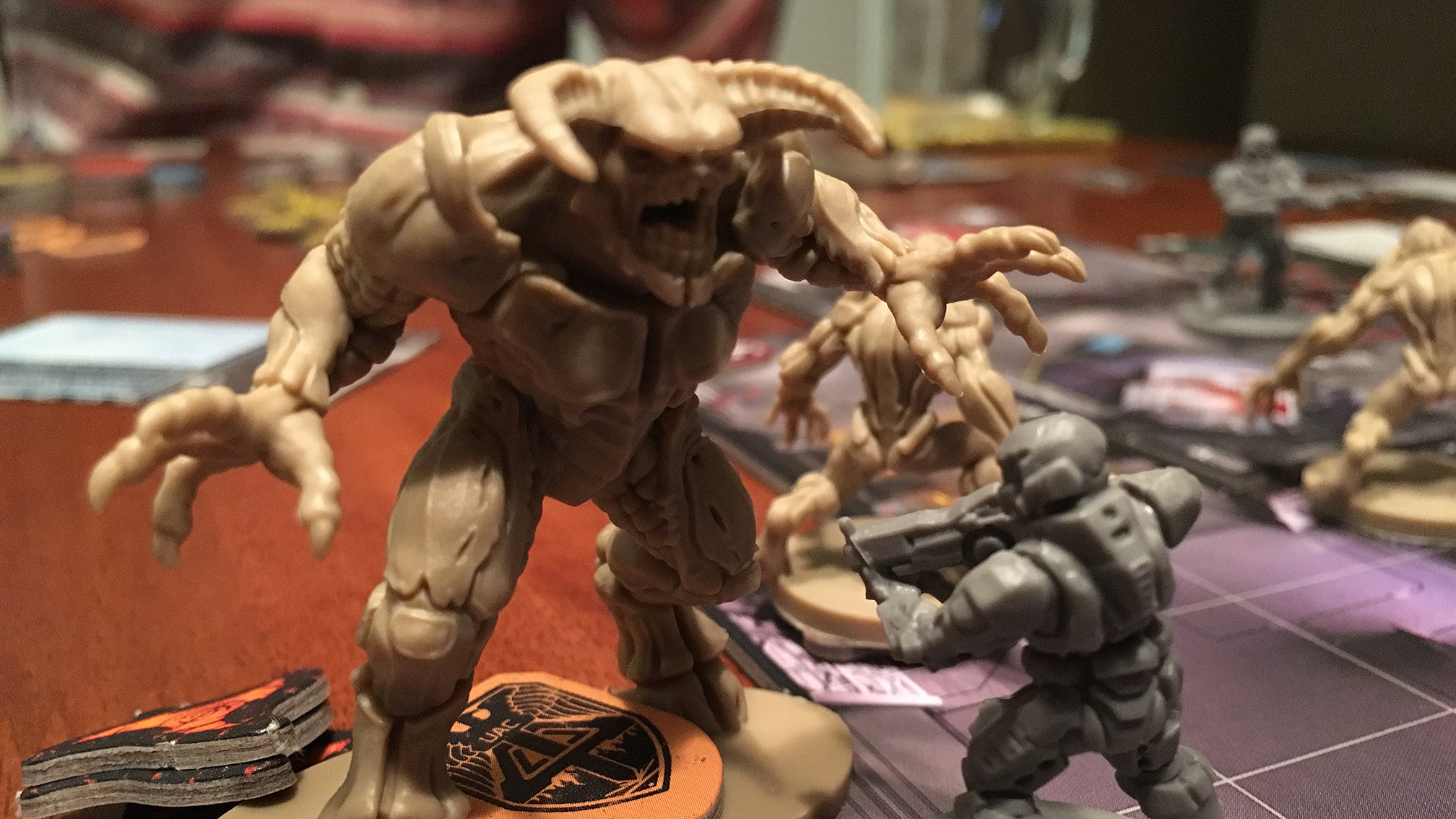
After the third fireball bounces off my armor, I start to feel pretty full of myself. I'm cutting through a big group of imps, blowing their stupid faces off with a chattering pulse rifle. I headshot one imp and stagger another, running over to stomp on his head for a Glory Kill. I swap over to my pistol, headshot a third imp, and dodge around a seriously pissed off Baron of Hell to run for a health kit in the corner—and this is all with plastic figures and a tabletop board.
Doom: The Board Game is out this winter from Fantasy Flight Games (I played it with a friend who’d received an early copy), and it joins a growing list of great board games aimed at PC gamers who enjoy both digital and tabletop gaming. Like the XCOM board game or the global health scare sim Pandemic, Doom rewards a core group of players for returning to a persistent game over many sessions. With up to four players working together against demons controlled by a fifth, it's much more D&D than Settlers of Catan.
As for that Baron of Hell: He’s faster than I guessed. He stomps across the room and blocks the health kit, covering the little cardboard tab with his plastic footprint. The plastic of his ridged horns point down at my tiny plastic figure, and he starts beating seven shades of Argent out of me.
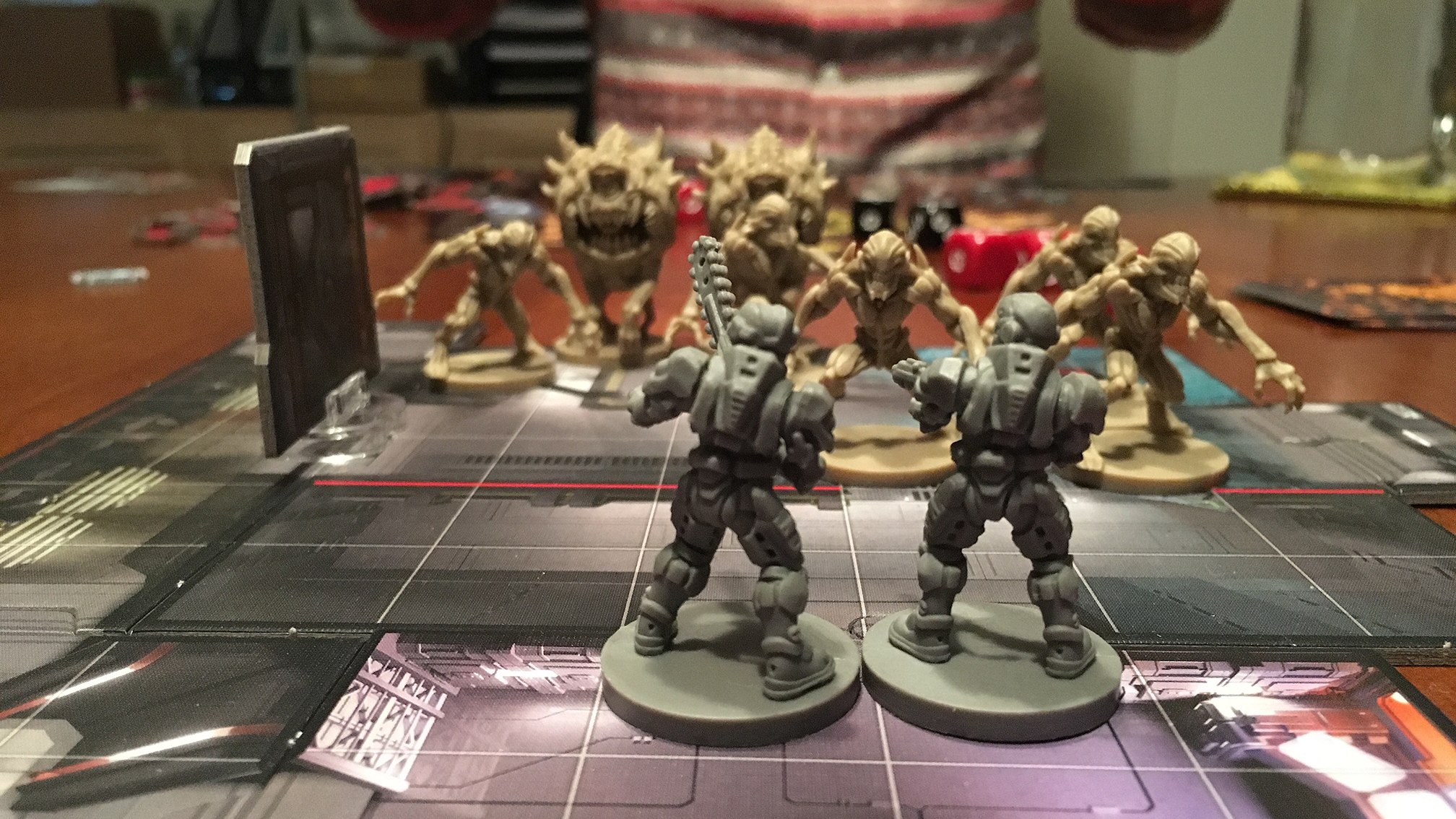
The Necropolis
Combat in Doom revolves around dice rolls and reaction cards. Each player has a few cards in their hand representing attacks and movement, like "double barrel shotgun blast" (roll for damage twice, each time rolling a little extra damage against enemies near the target) and "three round burst" (roll three dice for damage). Some attacks, like a rocket launcher shot, make you stand still. Others, like a quick shot of your pistol, let you move farther during your turn.
To attack, play an action card, move the number of spaces written on the card, and then roll dice against an enemy within range. To defend, draw a card from the action deck, using the card values to cancel out or dodge damage. Damage tokens keep track of lost hitpoints until you die or—for a marine with access to a healthkit—heal up.
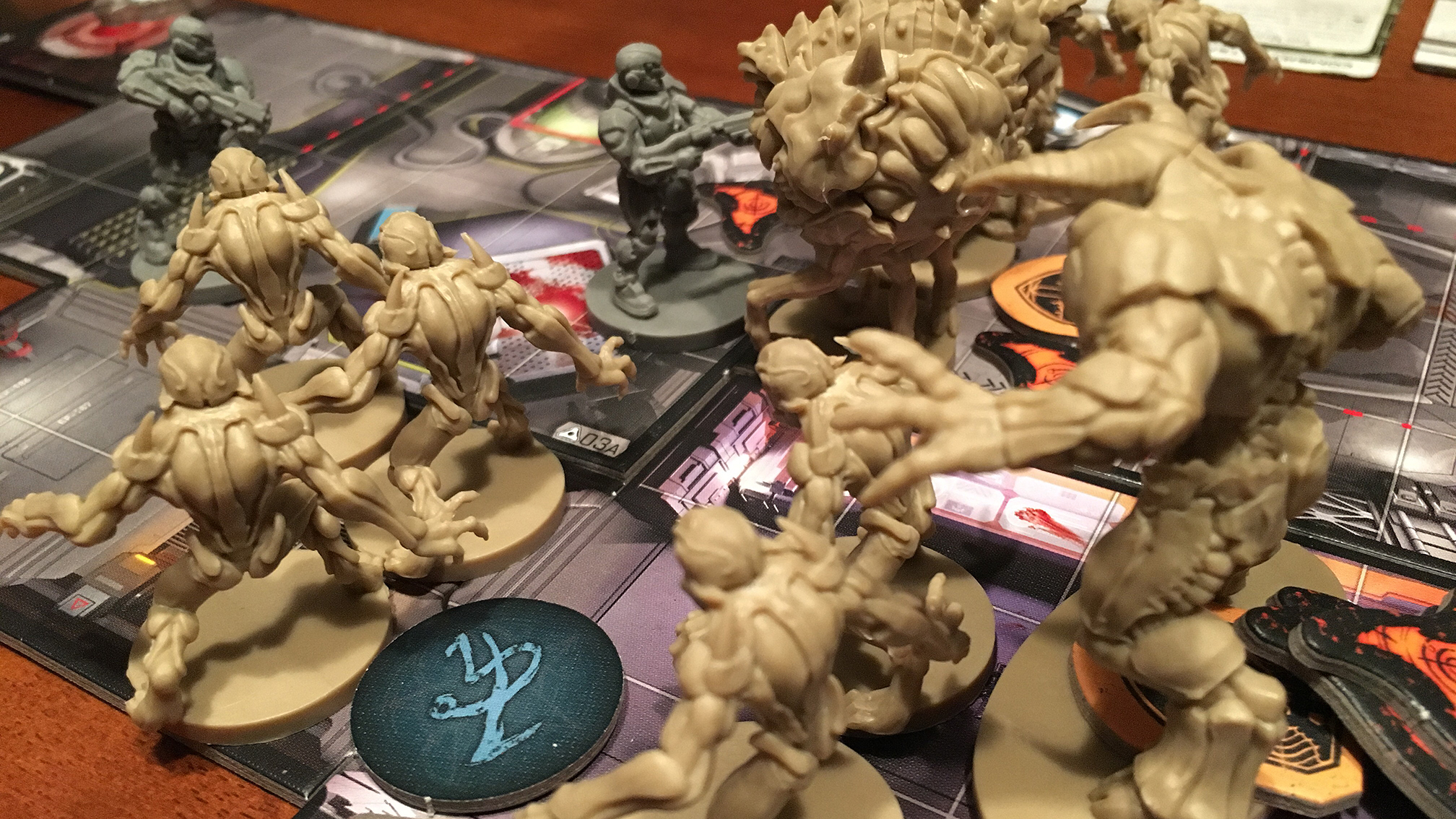
The really impressive thing is how much this mess of dice, cards, and tokens feels like Doom.
The really impressive thing is how much this mess of dice, cards, and tokens feels like Doom. The board game is amazingly successful at replicating the flow and feel of the video game's savage combat pace. Doom is played on a grid, and marines and demons alike move fast and prefer melee fights. Many demons, like the floating-mouth-of-anger Cacodemon, get to tear in with teeth if they get close. Marines, for their part, can instakill any wounded demon by moving into their grid-space and performing a glory kill, like chess.
During the first scripted mission (titled Knee-Deep in the Dead) my squadmate and I opened a door and triggered three demon portals on the other side. In the melee that followed, imps and cacodemons ran forward to use their claws and clear the way for more demons rushing in behind; we marines ran forward to get the most out of our close-range shotguns and glory kills. It was a beautiful (imagined) meat grinder. "Push-forward combat," it turns out, is also exhilarating with dice and cardboard.
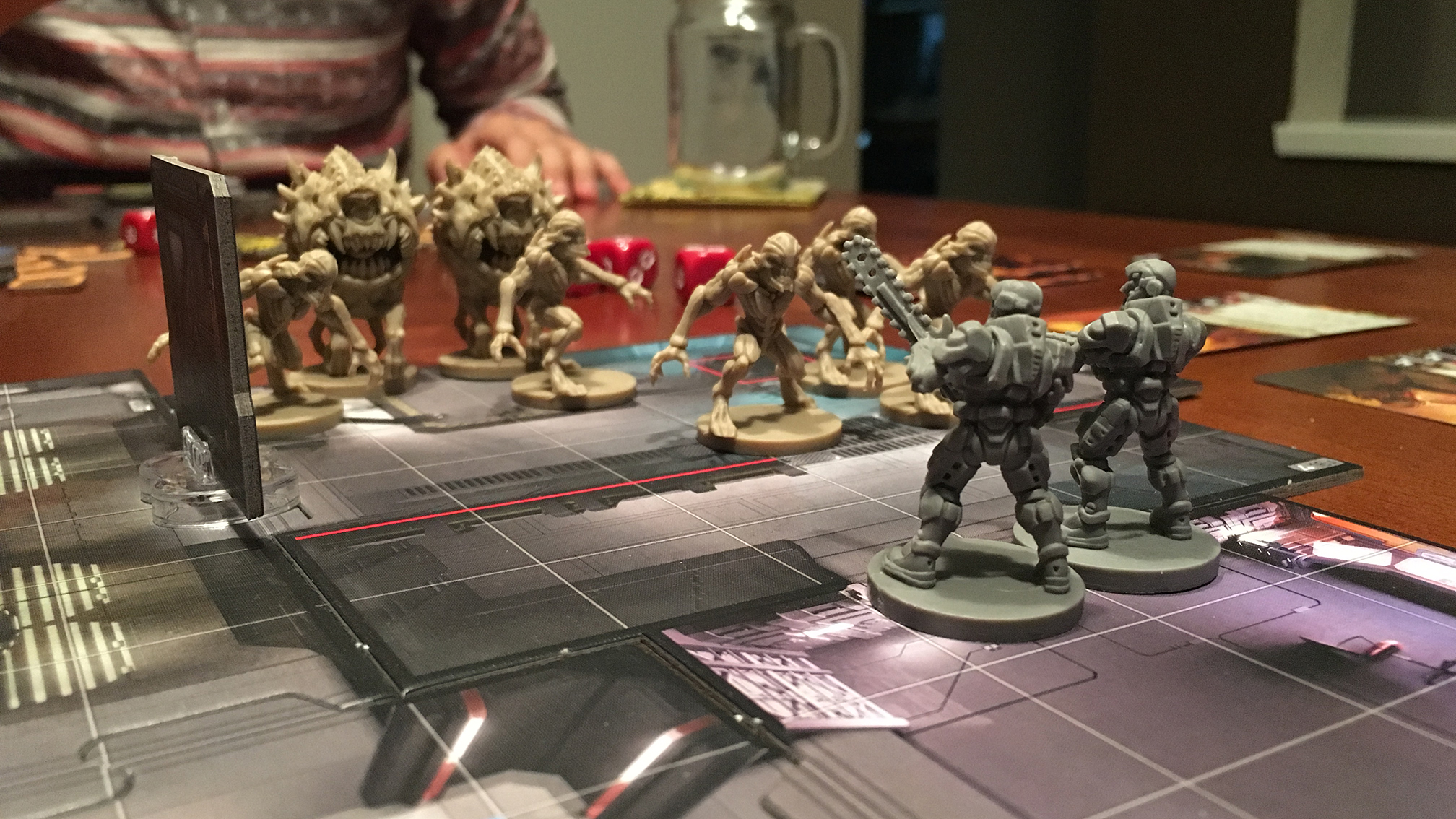
Doom is designed for four marines, but takes pains to balance smaller games, adding extra health points and damage boosts for marines on short-handed teams. You can even play Doom as a one-on-one game, the demons swarming a single player who moves fast enough and shoots often enough to be worthy of the title Doom Slayer. Like with many tabletop games, though, more players is better. Marines have class cards and weapon loadouts that give them individual skills, which let them combine attributes to open up new strategies. The Squad Leader, for example, can sacrifice cards out of her hand to give another marine extra movement points. If the player with the shotgun needs to cross a map to get a crucial kill, communicating with the Squad Leader can make it happen.
Resource operations
It takes a kitchen table's worth of colorfully printed cardboard to track the bonuses and status effects that a videogame calculates under the hood.
The Doom campaign book comes with layouts and instructions for two campaigns, each with six missions. Each mission script shows players how to connect hallways and room sections, where to put demon portals and pick-ups, and where to place doors. The instructions themselves are clear, but the things the instructions ask you to do can be a bit tricky.
The biggest gaming news, reviews and hardware deals
Keep up to date with the most important stories and the best deals, as picked by the PC Gamer team.
Doom is one complicated board game. There are a dozen different stacks of cards and tokens: action cards, argent energy tokens, damage counters, stun tokens, frag tokens. It takes a kitchen table's worth of colorfully printed cardboard to track the bonuses and status effects that a videogame calculates under the hood. Things also get crowded: Placing a -1 damage counter and a stun token on a specific imp without knocking over the entire hoard is an feat I compare to breadbasket surgery in Operation.
Managing the physical logistics of plastic figures can also be a challenge. All demons of a single type move during the same turn, so at times our long-suffering demon player had to guide eight or nine identical plastic imps through movements and attacks. Has the third imp from the left already attacked, or was he next in line? We had to retrace our steps a couple of times to find out.
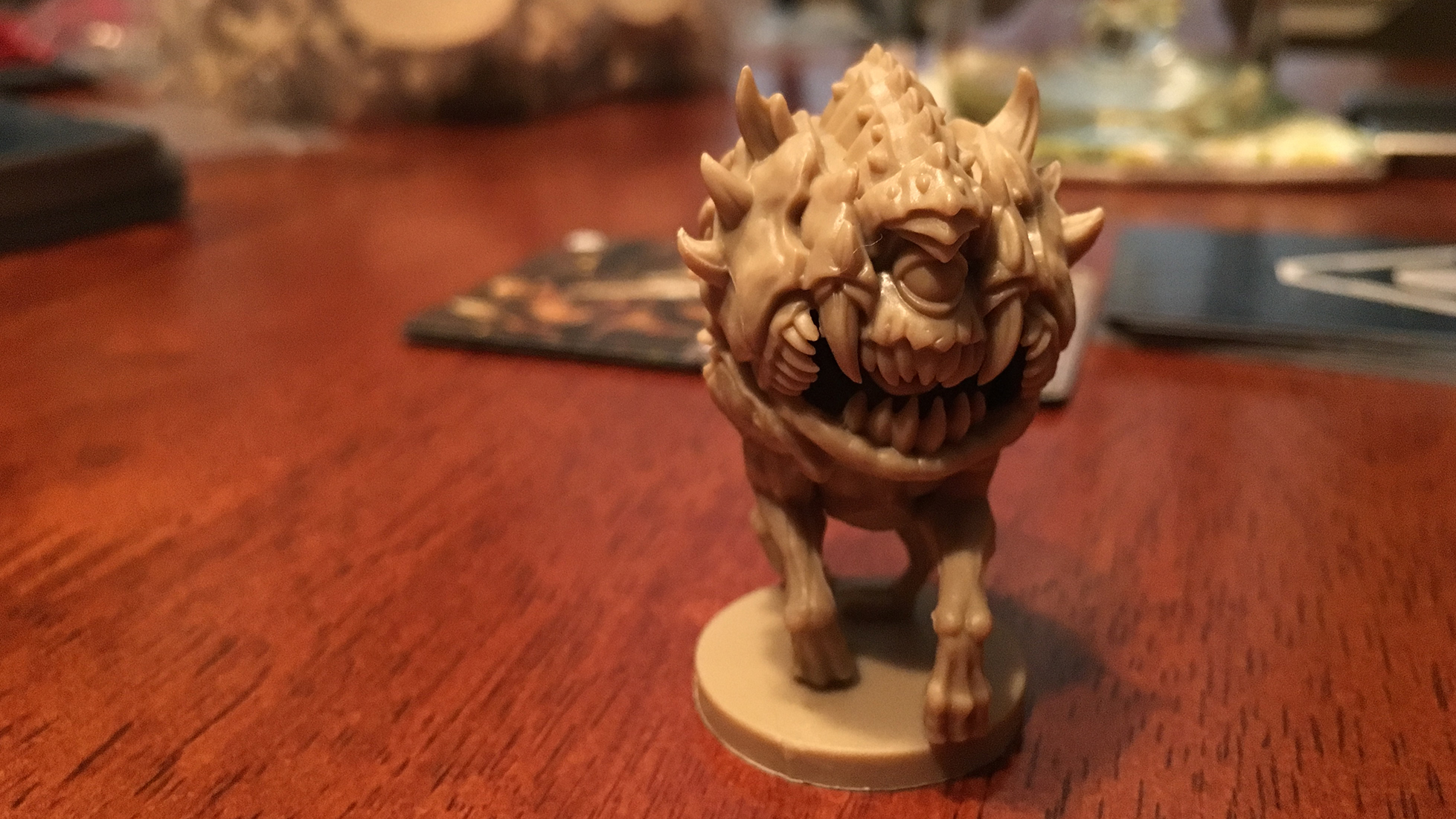
On the plus side, individual model quality is really excellent—on par with the detail I'd expect from Warhammer or Flames of War figurines. Doom figures ship as unpainted plastic, too, so the artistically inclined could probably whip up a demonic paint job to help tell imps apart.
The specter of painting these figurines brings me to my only real complaint about Doom: it's a pretty big commitment of time and money. All of these models and pieces make Doom an expensive buy (currently at $80), and each mission took my group a few hours to play. There's true joy in carving out an afternoon of face-to-face time with good friends, but as I look at my life (and my calendar), I realize that opportunities to dive into an ongoing Doom campaign will be rare. Just as we enjoyed Risk Legacy in part because it played faster than Vanilla Risk, I'd love a version of Doom that I could rip through in a lunch hour.
My own busy schedule is hardly a knock against the overall quality of the game, though. This is a detailed, complicated recreation that takes Doom's crazy combat and simulates it almost perfectly with turn-based strategy and handfuls of dice. With the money, time, and friends, an afternoon spent with the Doom soundtrack on repeat and a bunch of plastic Hell Knights in battle could be more rewarding than another internet-based deathmatch. That's a hell of an achievement.

